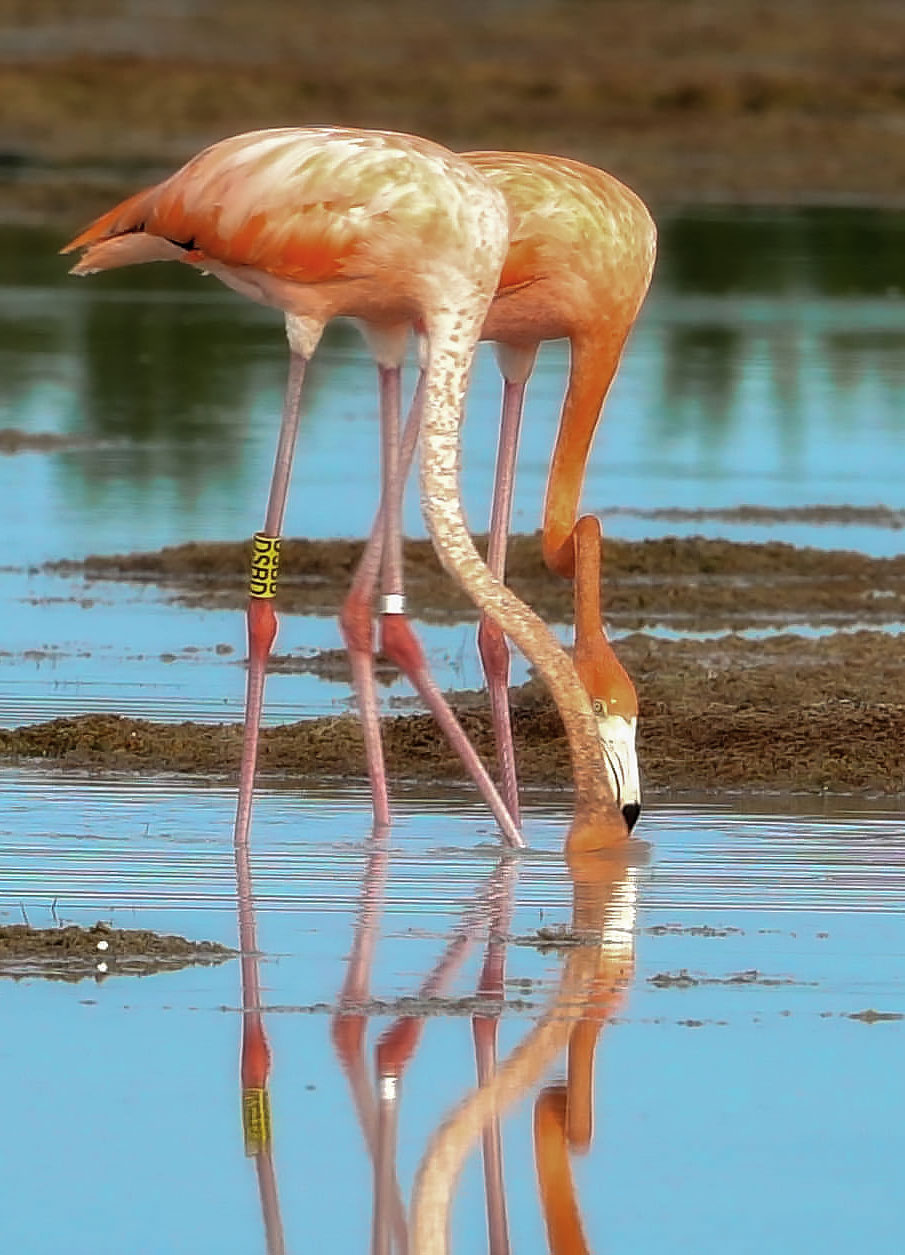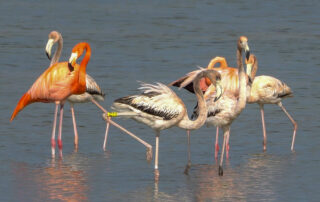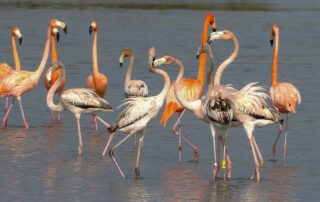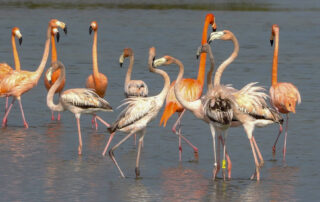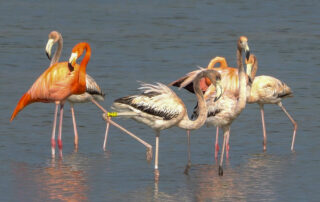» International projects «
Creating flamingo (phoenicopterus ruber) tag reading teams in Cuba and the rest of the Caribbean
Its cross-border dispersion has scientific support that proves its presence in the United States, the Cayman Islands, Cuba and probably in other countries with an unproven inference, such as Puerto Rico and the Dominican Republic. (Galvez X, et al., 2016), (through the recapture of visible code rings) and (FPYEH., 2022, with radio-transmitters, in the case of Cuba). The verification process by reading rings is less expensive, but it takes time, which can only be shortened by increasing the number of readers and systematizing the search and reading action in all possible countries, both in the Continental Caribbean and Insular.
How to report ringed flamingos.
As part of the Comprehensive Conservation Program for the Caribbean flamingo (Phoenicopterus ruber), several member countries of the GCFC have ringed specimens of this species and the information is collected in a single database (SIAM-2002)
Banding individuals with a unique code provides long-term information on nest site fidelity, longevity, recruitment and knowledge about their behavior during their life cycle, as well as their association with certain variables of the habitats they use for their survival, which not only serves to adopt management measures to conserve them, but can also constitute an indicator for assessing climate change.
You can contribute to this valuable study by reporting the ring code that you have observed. To report a previously observed ring, download the Ring Report Form, fill in its data and send it to the email: xiomara@caribbeancoastconservancy.org. You will receive information with the life history of the specimen.
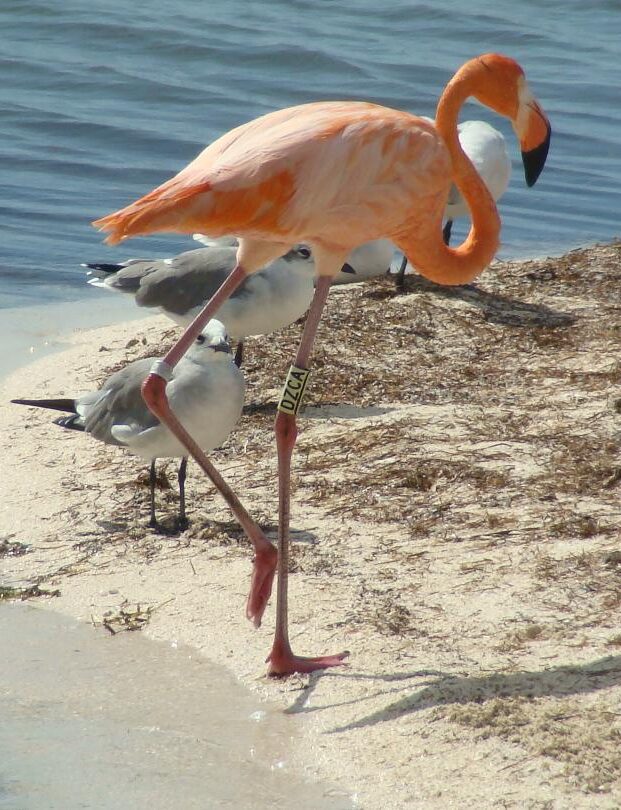
Gallery
» Support us with your donation «
Do you want to support?
In some of the Caribbean countries, members of the (GCFC) such as the Bahamas, Venezuela, Cuba and recently Bonaire, efforts have been made to place plastic rings with a unique code for each country and with visible letters for identification. However, it is Mexico that has contributed the most information to the follow-up study, since from 1999 to date, it has marked between 300 and 400 individuals consecutively each year that the colony has been successful. Ringing is and will be a very necessary tool for research, but it is meaningless if it does not have an associated mechanism to retrieve the largest number of readings in the shortest possible time. In the scientific publication, Gálvez et al. (2016) it was shown that flamingos in their annual dispersal movements move outside of Yucatan and a number of tagged individuals have been read in at least four countries. (article in the block). In 2019, the Pedro and Elena Hernández Foundation has installed satellite transmitters to 19 adult flamingos, three of which have arrived in Cuba. This study not only corroborates the already known mobility and dispersion, but also provides new and valuable information on questions that are more difficult to answer without this high level of technology, such as movement between localities once they arrive in the country to which they move. We thank FPYEH for sharing such valuable results and invite everyone to watch an excellent video on the foundation's website.


